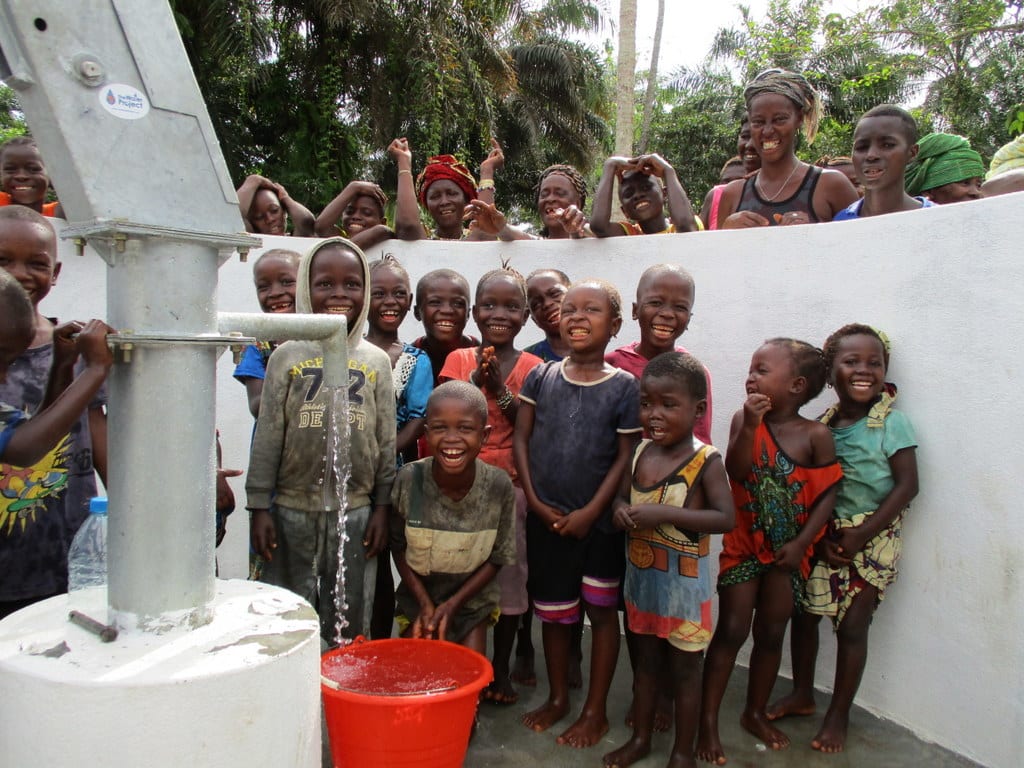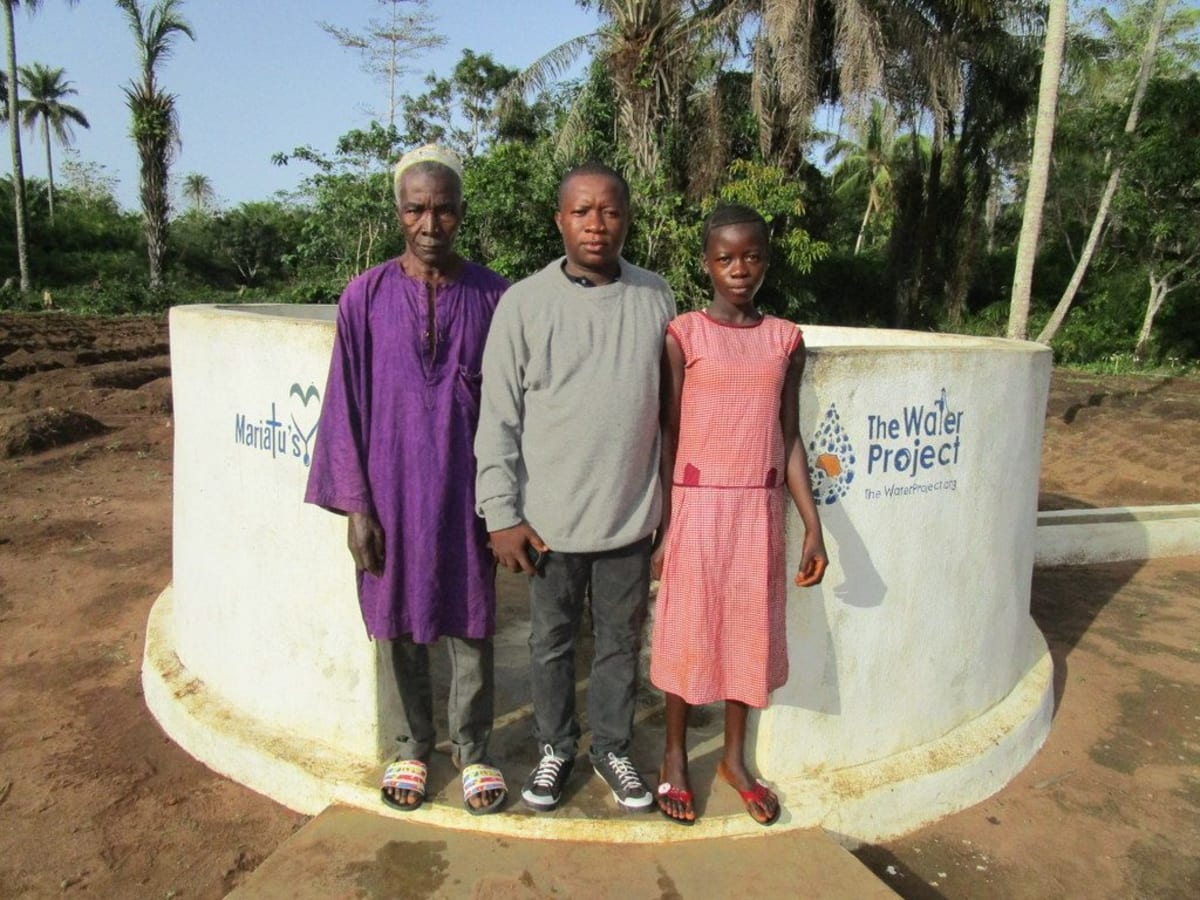This project is a part of our shared program with Mariatu’s Hope of Sierra Leone. Our team is pleased to directly share the below report (edited for clarity, as needed).
Welcome to the Community
Baya Village is home to the Susu tribe. It is a very small community that depends on farming, gardening, and trading. Most of the Susus are Muslim, and they have a very small mosque where they attend prayers. They lack other basic facilities such as a hospital, school, market, community center, and others.
The first person to settle in this community was named Thaimu Sillah, later crowned as chief and called Pa Alimamy Sillah. During that time, there were many tribal wars, so he named the village Baya which means "no evil shall enter into it."
Farmers plant crops such as pepper, okra, cucumber, rice, garden eggs and palm, which is later processed for palm oil. Water is required for these income-generating activities.
A normal day begins early in the morning by 5 am. People go to the mosque to pray while the children are still in bed. Women warm leftover rice for their families' breakfast. Children take their baths, put on their uniforms and walk to school in Samaya Village. It is about five miles from Baya Village to this school.
Sometimes, they give their children le500 (five hundred leones) (approximately 7 cents) for lunch. After the children have left for school, some of the parents go to the farm while others go to the market to do business. Children return from school around 3:30 pm. After school, children go searching for water for their parents to use. If parents are still at the farm, then the children will join them there. At around 6 pm, they start cooking dinner. After eating, they clean up before returning to the mosque for prayer. This is when most people go to bed, but on moonlit nights children will stay up to play. There is no electricity in the village.
Water Situation
If those living in Baya want safe drinking water, they need to walk for one and a half miles to get to a drilled well in the neighboring village of N'Baimbaya. This well is monitored by us on a quarterly basis, and we can confirm it is working as intended.
But this is a long trek for water, so locals often opt for a closer source. There is an open water source in a swampy area at the edge of the village, surrounded by grass and bush. Wild animals like snakes and monkeys make their home in these bushes, posing danger to the locals as they venture to fill their water containers. Buckets are dunked under the muddy water and filled, while a neighbor bathes or washes their clothes. Nonetheless, people use this water for drinking, cooking, cleaning, and all other purposes. After drinking, people are known to suffer from diarrhea, vomiting, cholera, rashes, typhoid, and parasites.
72-year-old farmer, Mr. Momoh Sillah, told us:
We have been waiting from 2016 for this project. When we want pure drinking water, we go a far distance to get it. Our children are deprived of good health because of the poor water we have. We are like a war front, always alert with medicines because sickness will come our way at any time because of the poor drinking water. Even yesterday my granddaughter was seriously ill and is now admitted at the Government Hospital. She has worms in her stomach. We spend more in medication which always makes our lives deteriorating. We cry out for help but we receive none from Government. We are happy to receive this project in our community since we have been waiting for it. We pray it will come soon.
Sanitation Situation
Every household in Baya Village has its own latrine, however rudimentary. Pits are shallow, covered with slats and clay, and walls are made of thatched palm leaves. Pits are left open throughout the day, attracting flies and larger scavengers to their foul odor.
There are quite a few clotheslines for drying clothes washed at the swamp, but there are no dish racks for drying utensils. Hand-washing is not valued here. There are no hand-washing stations. A few families think to pass around a water bucket before meals, but they don't know how to wash their hands properly.
Plans: Hygiene and Sanitation Training
There will be hygiene and sanitation training sessions offered for three days in a row.
No hand-washing stations were observed here. After our visit, the hygiene and sanitation trainer decided it would be best to teach community members how to build a tippy tap (a hand-washing station built with a jerrycan, string, and sticks). They will use these tippy taps for hand-washing demonstrations, and will also teach about other tools like dish racks and the importance of properly penning in animals.
These trainings will also strengthen the water user committee that manages and maintains this well. They enforce proper behavior and report to us whenever they need our help solving a serious problem, like a pump breakdown.
Plans: New Well
As of right now, a drill location has not been decided upon. As we get closer to the start date, we will hold several meetings with the community so that they can point out locations where they'd like the well. We will discuss this with them and find the best and most suitable place with equal access to the entire community making sure that everyone is in agreement.
Our team will drive over the LS200 mud rotary drill rig and set up camp for a couple of nights. Once the well is drilled to a sufficient water column, it will be cased, developed, and then tested. If these tests are positive, our mechanics will install a new India Mark II pump.
This community has battled drinking dirty swamp water and walking long distances in search of clean water. By drilling this borehole, Baya Community will be provided with plenty of safe drinking water.

 Borehole Well and Hand Pump
Borehole Well and Hand Pump
 Rehabilitation Project
Rehabilitation Project






























